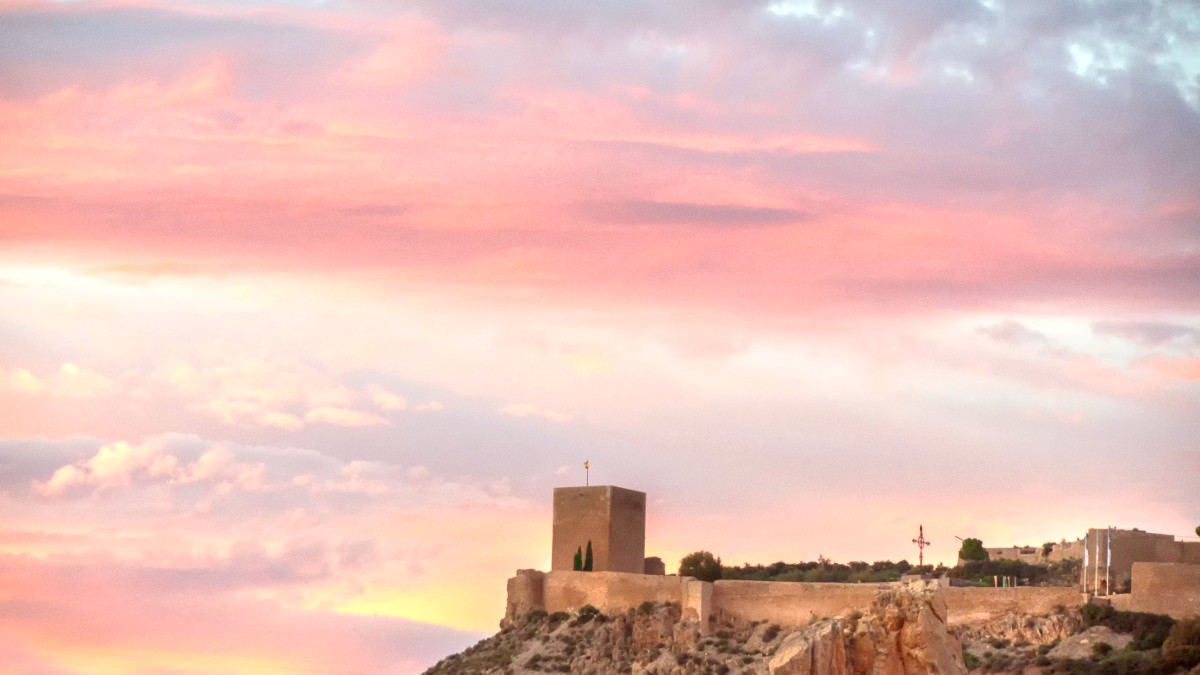
Spain
Local produce like tomatoes, peppers (especially ñora), artichokes, and broad beans are central. Fresh seafood from the Mar Menor, especially its unique prawns, forms a significant part of the cuisine. Pork and lamb are widely consumed. Paprika (pimentón de Murcia), saffron, and ñoras are signature spices. Olive oil is a staple base.
Regional variations mean coastal areas focus more on fish and seafood rice dishes, while inland "huerta" areas emphasize vegetables, legumes, hearty stews, and traditional pastries.
Lunch is the main meal (14:00-16:00). Dinner is late, from 21:00 onwards. Many restaurants do not open for dinner before 20:30.
Small plates designed for sharing, often eaten standing at a bar with a drink. "Tapas hopping" (ir de tapas) is common.
Keep hands visible on the table. Sharing dishes is common. Expect animated conversations and a lively atmosphere in restaurants.
A rich rice dish with local fish, cooked in a cast-iron pot, often served with aioli.
A required experience on the Mar Menor coast.
A simple scrambled egg dish with zucchini, onion, and sometimes potato, highlighting fresh vegetables.
A classic Murcian "huerta" dish.
A savory meat pie with a flaky pastry crust, filled with minced meat, hard-boiled egg, and often cured ham.
A popular snack or light meal.
Murcia has three Denominations of Origin: Jumilla, Yecla, and Bullas, producing excellent red wines, mainly from the Monastrell grape.
A sweet, layered coffee with condensed milk, Licor 43, brandy, and cinnamon, unique to Cartagena.
Murcia city and Cartagena feature upscale restaurants with modern interpretations of Murcian cuisine or international dishes. Refined service and wine pairings are common.
Abundant throughout the region, offering quality food at reasonable prices. Many have a "Menu del Día" for lunch.
Explore local markets for fresh produce and prepared foods, or find international cuisine.
Options are becoming more common in larger cities and modern establishments. Look for "platos de verduras" or "ensaladas."
Tapas like "pisto" or "patatas bravas" are often vegetarian.
Awareness of gluten-free ("sin gluten") needs is growing. Many restaurants can cater to these. It is advisable to learn Spanish phrases or carry a card explaining your restrictions.
Supermarkets offer a growing range of gluten-free products.
Learn Murcian dishes in Murcia city or Cartagena.
Explore citrus groves, vineyards in Jumilla, Yecla, Bullas.
Casual beach bars along the Mar Menor for fresh seafood.
Events celebrating specific produce or traditions.
Dedicated Halal or Kosher restaurants are limited. It is best to look for places that can accommodate by preparing dishes without certain ingredients.
Supermarkets in larger cities might carry some packaged products.
Use apps like HappyCow for vegetarian/vegan restaurants. Clearly communicate with restaurant staff about your needs.
Online forums or travel blogs for Spain may provide specific recommendations.
Chiringuitos: Casual beach bars, especially around the Mar Menor, offering fresh seafood and drinks right on the sand.
Mesones/Tabernas: Traditional Murcian eateries focusing on local specialties in a rustic setting.
Available in Murcia city and Cartagena, these focus on traditional Murcian cuisine, tapas, or wine tasting.
Agritourism initiatives allow visits to citrus groves, vineyards (Jumilla, Yecla, Bullas DO regions), or olive oil mills.
The region hosts food-related events throughout the year, celebrating specific produce (artichokes, rice) or culinary traditions.
A rich dessert made from egg yolks and sugar, similar to a crème brûlée without the crust.
Iconic sweet treat.
A Spanish bread pudding often made with stale bread, milk, eggs, and caramel.
A comforting local dessert.
Do not miss trying this flavorful rice dish if you visit the coastal areas. It is a true Murcian specialty.
Experience the unique sweet, layered coffee drink from Cartagena for a local taste adventure.
Visit Mercado de Verónicas in Murcia for fresh produce and a lively atmosphere.
Be aware of Spanish meal times. Lunch is the main meal, and dinner is usually eaten late.